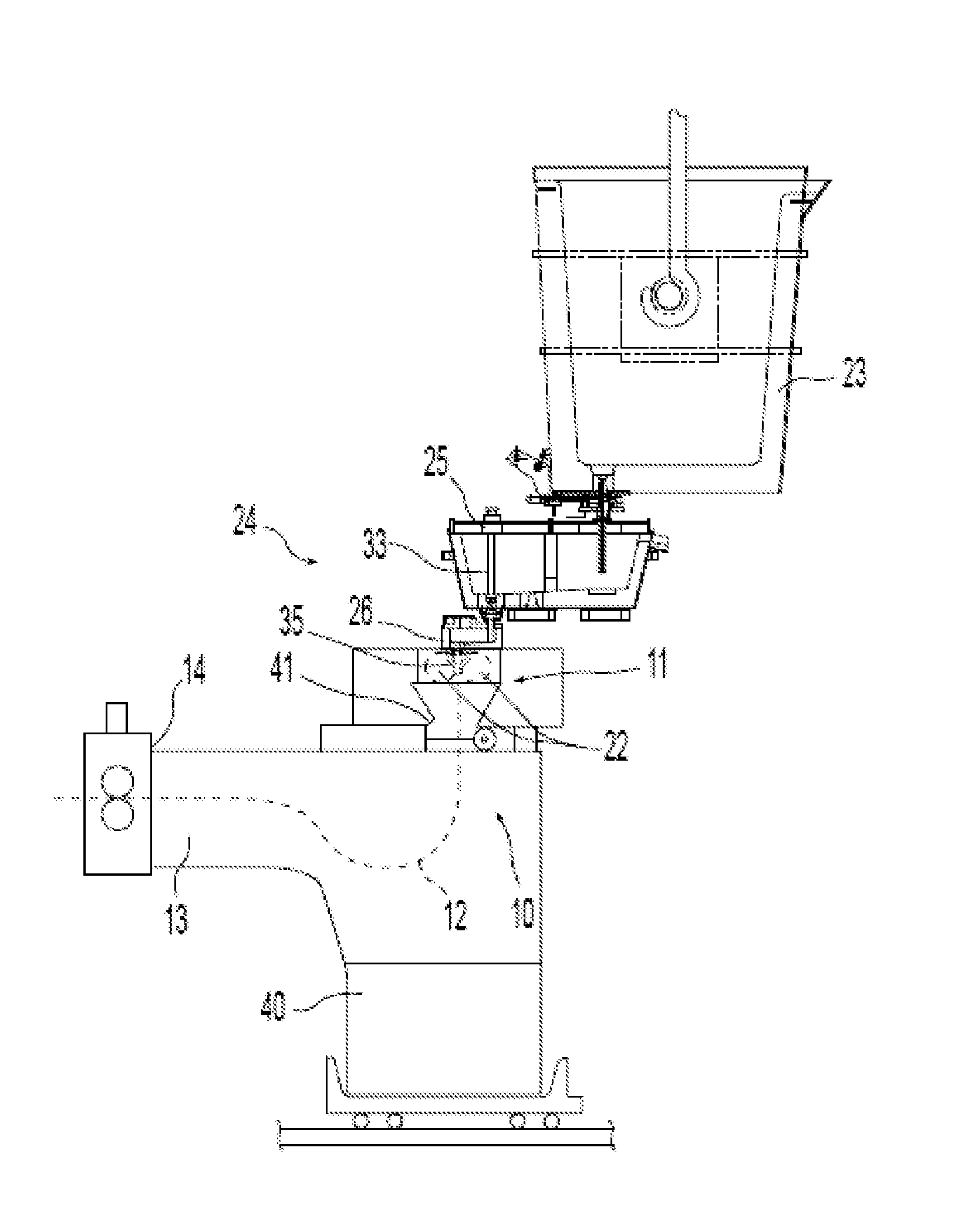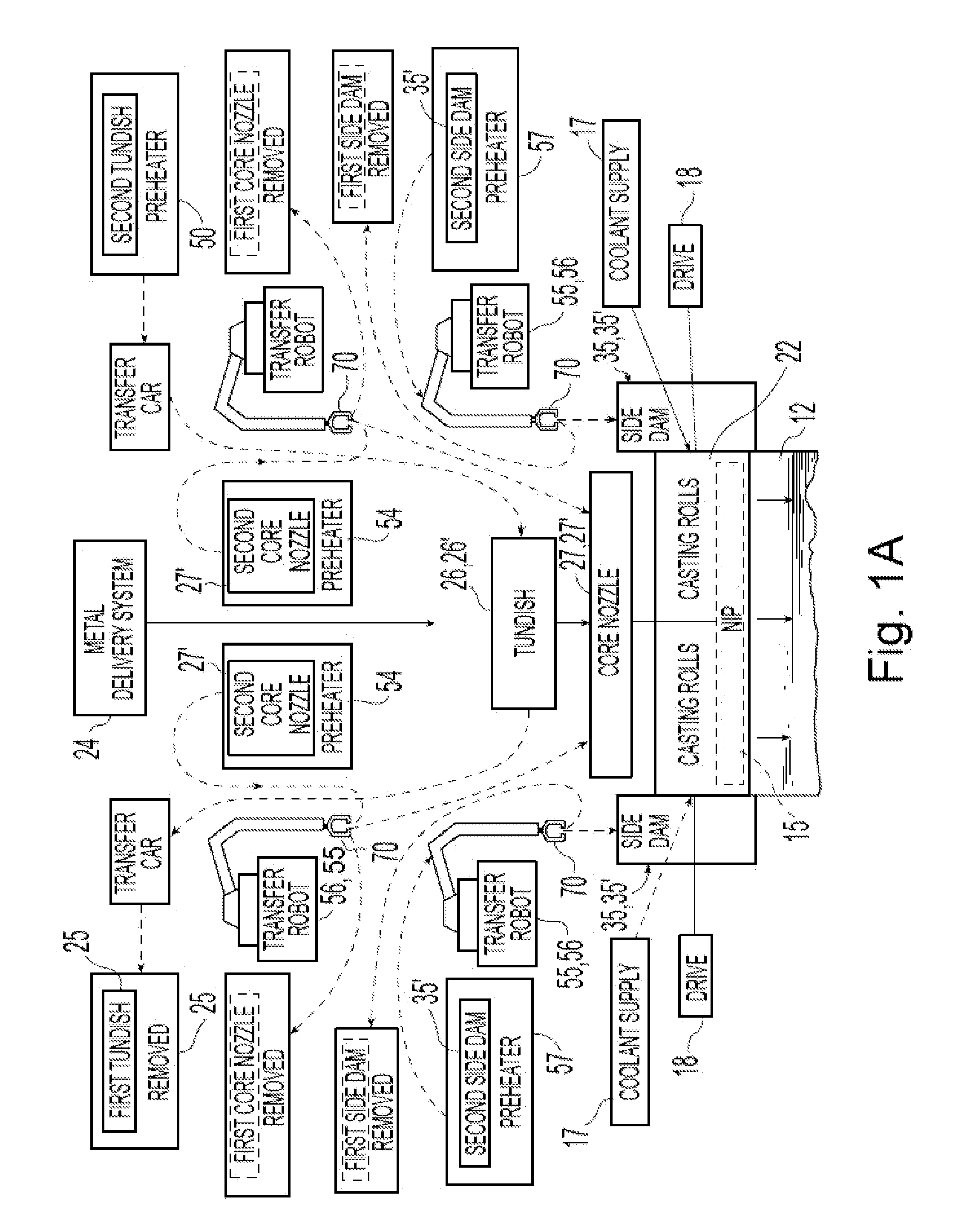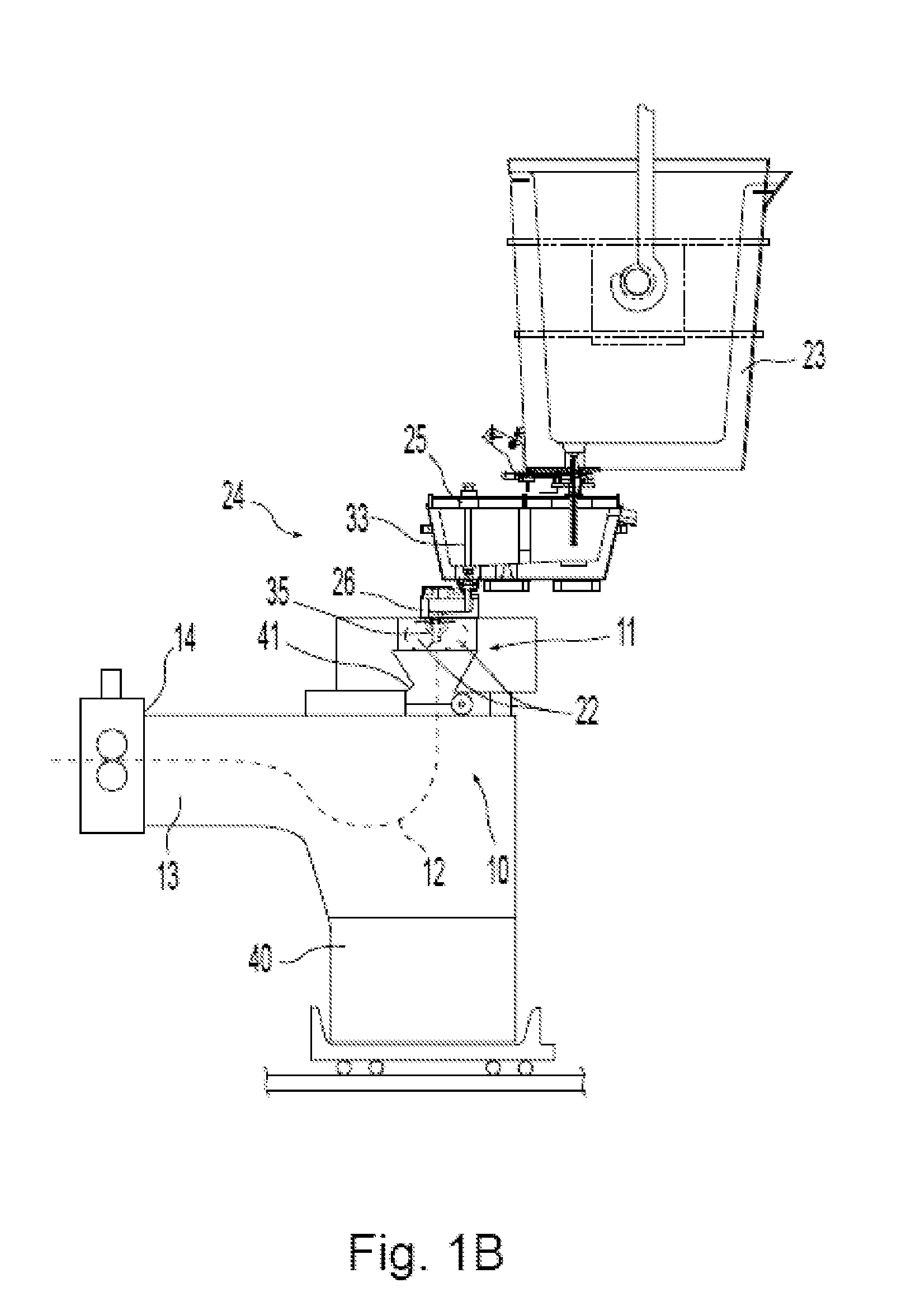Side dam with insert
- Summary
- Abstract
- Description
- Claims
- Application Information
AI Technical Summary
Benefits of technology
Problems solved by technology
Method used
Image
Examples
Embodiment Construction
[0026]FIGS. 1A-1G illustrate various aspects of an exemplary continuous twin roll caster system. The illustrative twin roll caster comprises a twin roll caster denoted generally as 11 producing a cast steel strip 12 which passes within a sealed enclosure 10 to a guide table, which guides the strip to a pinch roll stand 14 through which it exits the sealed enclosure 10. The seal of the enclosure 10 may not be complete, but appropriate to allow control of the atmosphere within the enclosure and limit access of oxygen to the cast strip within the enclosure as hereinafter described. After exiting the sealed enclosure 10, the strip may pass through other sealed enclosures and may be subjected to in-line hot rolling and cooling treatment.
[0027]Twin roll caster 11 comprises a pair of laterally positioned casting rolls 22 forming a nip 15 there between, to which molten metal from a ladle 23 is delivered through a metal delivery system 24. Metal delivery system 24 comprises a tundish 25, a r...
PUM
| Property | Measurement | Unit |
|---|---|---|
| Length | aaaaa | aaaaa |
| Length | aaaaa | aaaaa |
| Fraction | aaaaa | aaaaa |
Abstract
Description
Claims
Application Information
 Login to View More
Login to View More - R&D
- Intellectual Property
- Life Sciences
- Materials
- Tech Scout
- Unparalleled Data Quality
- Higher Quality Content
- 60% Fewer Hallucinations
Browse by: Latest US Patents, China's latest patents, Technical Efficacy Thesaurus, Application Domain, Technology Topic, Popular Technical Reports.
© 2025 PatSnap. All rights reserved.Legal|Privacy policy|Modern Slavery Act Transparency Statement|Sitemap|About US| Contact US: help@patsnap.com



